Table of contents
The main growing areas for jalapeños are Mexico and the USA. There you can find them mostly raw, in Europe they are mainly pickled. If possible, look for organic quality.
Use in the kitchen
Jalapeños have a bitter, slightly earthy taste and a spicy heat. When ripe and red, the aroma is a little sweeter. They are particularly popular in Mexican cuisine and in the southwest of the USA, whether eaten raw, fried or steamed.
A rough distinction is made between fresh, pickled and smoked jalapeños (so-called chipotles). Fresh jalapeños are usually harvested green, i.e. before they ripen to red. They are an important ingredient in spicy salsas, eg with nachos, or in fillings and as a topping on hamburgers or pizza.
Can you eat jalapeños raw? Of course you can eat the crunchy chili fruit raw, for example to spice up salads or as a garnish for various dishes. On the grill, you can refine red-ripened jalapeños into smoky chipotle. These serve as a spicy ingredient for braised dishes or sauces. Pickled jalapeños are mainly available in Europe and are usually cut into rings. You can find out more about this in the article Pickled Jalapeños (preserved jalapeños). Although they don't taste quite the same, they can be used in a similar way to fresh ones. In addition to traditional dishes with meat or cheese, the taste of jalapeños also unfolds excellently in vegan-adapted dishes, such as chili sin carne or various versions of fajitas and tacos. Jalapeños can be creatively combined with beans (e.g. kidney beans),corn, bell peppers ( green, yellow, red), tomatoes, rice, pasta, garlic, mustard, pepper, turmeric and other intense spices.
The spicy taste can be balanced out somewhat with fatty foods (including plant-based foods, e.g. from coconut). Use coconut products sparingly, as they contain a lot of saturated fatty acids. You can find more information in the article on coconut oil. Alternatively, vegan yogurt or milk drinks, e.g. made from oats or soy, can reduce the spiciness somewhat.
Note: When working with jalapeños, it is recommended to wear gloves to avoid skin irritation. This is caused by the capsaicin contained in the chili. Since capsaicin is not water-soluble, if you are not wearing gloves you should wash it off your hands with oils/fats or alcohol and avoid touching your eyes or wounds with your hands.
Vegan recipe for raw vegetable salad with jalapeño
Ingredients (for 4 people): 2 carrots, 2 celery sticks, 2 apples, 2 sweet peppers (red), 1 bunch of spring onions, 1 handful of green jalapeños (organic), 1 tbsp rapeseed oil (cold pressed), 2 tbsp lemon juice, 1 tsp salt, ½ tsppepper (black).
Preparation: Wash the carrots, celery, apples, sweet peppers and spring onions and cut into thin strips. Wash the jalapeños and remove the seeds if desired and cut into thin rings. Mix all ingredients together in a large bowl. Add the rapeseed oil, lemon juice, salt and pepper and mix well. Serve in a bowl and enjoy the vegan raw vegetable salad.
Vegan recipe for chili sin carne
Ingredients (for 4 people): 1 onion, 3 cloves of garlic, 2 celery sticks, 2 green bell peppers, 2 green jalapeños (organic), 1 tbsp rapeseed oil (refined), 1 can of chopped tomatoes (400 g), 200 ml vegetable stock, 1 can of kidney beans (250 g drained weight), 1 can ofcorn (285 g drained weight).
Preparation: Peel and chop the onion and garlic finely. Clean the celery and cut into rings. Wash the sweet peppers and cut into strips. Cut the jalapeños into rings. Heat the rapeseed oil in a large pot. Add the prepared vegetables and fry for five minutes. Add the chopped tomatoes, kidney beans, corn and vegetable stock. Simmer for about 10 minutes at a medium heat. Then serve the vegan chili sin carne and complement it with a portion of wholegrain rice, for example.
Vegan recipes with jalapeño (raw) can be found under the note: " Recipes that have the most of this ingredient ".
| Not only vegans or vegetarians should read this: Vegans often eat unhealthily. Avoidable nutritional errors. |
Purchasing - Storage
The jalapeño season lasts from August to October in Central Europe. Fresh jalapeños are rarely found in large retailers such as Coop, Migros, Denner, Volg, Spar, Aldi, Lidl, Rewe, Edeka, Hofer, Billa. The pickled variety in cans or jars is more common. This also applies to organic supermarkets such as Denn's Biomarkt and Alnatura. The chances tend to be somewhat higher in well-stocked supermarkets than in smaller shops. Shops selling Mexican or Spanish specialties are more promising.
The availability of Jalapeño (raw) varies depending on the size of the store, catchment area, etc. Our recorded food prices for the DA-CH countries can be found above under the ingredient image - and by clicking on them you can see their development at various suppliers.
Storage tips
Fresh jalapeños will keep for several months in a dry, cool place protected from light. It is best to store them uncovered in the refrigerator to avoid the formation of condensation and mold in closed containers. They can also be frozen and thawed again when needed.
Ingredients - Nutritional values - Calories
The chili fruit is very low in calories and has a low energy content. Jalapeño contains 29 kcal per 100 g, which consists of 0.37 g fat, 0.91 g protein and 6.5 g carbohydrates. 1
Fresh jalapeños have a high vitamin C content (119 mg/100g; 148% of the daily requirement). Horseradish contains similarly high amounts (114 mg/100g). Yellow bell peppers have even more of this antioxidant (184 mg/100g). Pickled jalapeños only have 10 mg/100g of vitamin C. 1
Jalapeños contain 0.42 mg/100g of vitamin B6 (30% of the daily requirement). Corn on the cob (0.47 mg/100g) and kidney beans (0.40 mg/100g) have a similarly high content. Chili flakes contain almost twice as much vitamin B6 (0.81 mg/100g), although people generally consume less of it than fresh chili. 1
100 g of jalapeño contains 3.6 mg of vitamin E (30% of the daily requirement) and is therefore comparable to sea buckthorn berries (3 mg/100g). It therefore contains more than twice as much vitamin E as red bell peppers (1.6 mg/100g). Pickled jalapeños contain only 0.69 mg/100g of the vitamin. 1
The complete ingredients of Jalapeño (raw), the coverage of the daily requirement and comparison values with other ingredients can be found in our nutrient tables. In the article Nutrients explained you will get a detailed insight into the topic.
Health effects
Are jalapeños healthy? Jalapeños are rich in vitamin C, vitamin E, secondary plant substances and capsaicin and are considered healthy foods, but people eat very little of them. In addition, the amount of nutrients they contain depends on the variety, ripening process, time of harvest, environmental conditions, growing conditions and post-harvest conditions (processing and storage). Vitamins C and E have strong antioxidant effects. Since they successfully capture free radicals, they can reduce the risk of cardiovascular disease. 2
The alkaloid capsaicin, found in sweet peppers and chili peppers, is responsible for the perceived spiciness. It belongs to the group of capsaicinoids (secondary plant substances) 3, has anti-cancer, antimicrobial, antioxidant, diuretic, analgesic and anti-obesity properties. 2
A study on the production of chipotles concluded that the total amount of phenols and flavonoids increased when red jalapeño peppers were smoked, and the antioxidant capacity increased during smoking. However, the content of capsaicinoids and ascorbic acid (vitamin C) decreased in smoked samples. Peppers smoked with pecan wood had the highest content of phytochemicals. 4 Another study concluded that pickled jalapeños had lower amounts of phytochemicals and less antioxidant activity than fresh peppers. 5 This suggests that fresh chilies are preferable to pickled varieties. Red jalapeños had a higher antioxidant capacity than green ones in one study. 6
Dangers - Intolerances - Side effects
The German Federal Institute for Risk Assessment states that higher doses of capsaicin can cause mucous membrane irritation, nausea, vomiting or high blood pressure and that caution is advised, especially with children. However, no health disadvantages should be expected within the scope of the internationally usual consumption of chili peppers. The maximum accepted dose is 5 mg capsaicin per body weight, which means an amount of 300 mg capsaicin ingested via a meal for a person weighing 60 kg. 7
People who are allergic to birch pollen, grass pollen, cereal pollen or mugwort pollen can develop a cross allergy with pepper varieties. Allergic reactions or intolerances can also occur when eating nightshade plants. The allergy spectrum is individual and can change over time. 8,9
Folk Medicine - Natural Medicine
It is known that indigenous peoples in Mesoamerica most likely used chili peppers as medicinal plants to treat asthma, coughs and sore throats, to relieve hangovers or to heal infected wounds. Other uses included placing red, crushed fruits on the feet to cure athlete's foot and healing snake bites by preparing a drink from boiled green peppers. 10
Ecological footprint - animal welfare
The ecological footprint of a food depends on various factors. The type of agricultural production (conventional vs. organic), average or seasonal or regional production, domestic production or import by truck, ship or plane, different types of packaging and whether the goods are fresh or frozen all play a decisive role. 11
Chili peppers are generally measured with a CO 2 footprint of 1.02 kg CO 2 eq/kg. Canned chilies have a slightly higher value at 1.54 kg CO 2 eq/kg. 19 According to ETH Zurich, which measured the global biodiversity loss due to land occupation of the products most commonly consumed in Switzerland, bell peppers (peppers) and chilies are among the four products that have the greatest effect. Products from Sri Lanka are striking, with a biodiversity loss of 2.47 gPDF-eq per kg, compared to chilies and peppers from Spain, whose value is 0.05 gPDF-eq per kg. 20 It is not clear whether this specifically includes jalapeños.
For 1 kg of green chilies and peppers, the total water footprint is 379 litres. 21
Worldwide occurrence - cultivation
Where do jalapeños come from? Capsicum annuum originally comes from Central America and northern South America. Domestication took place in Mesoamerica. 12 Jalapeños are mainly grown in Mexico, where the climatic conditions are ideal and chili cultivation is of great social, economic and cultural importance. Jalapeños make up about a third of Mexican pepper production. 13
Since there are countless varieties within the domesticated chili species, it is quite possible for the untrained eye to confuse them.
Growing your own
Jalapeños is no different to growing other types of chili. Growing your own on the balcony, in the garden or in a mini greenhouse is therefore definitely possible if you take a few things into account. The seeds should be sown in a sowing substrate in February or March. It is best to sow and transplant in a mini greenhouse to ensure the best possible climatic conditions. At optimal temperatures of 25 to 28 °C, germination should begin within 10 to 30 days. 14 Germination cannot occur at temperatures below 22 °C. 15 For optimal growth, jalapeños need a warm and wind-protected location, a sunny location, temperatures above 15 °C and at least 6 to 8 hours of sunshine per day. Commercially available sowing soil and vegetable soil are sufficient for the substrate. 14 After about 80 days after flowering, the fruits reach a size of 7 cm and are ready to be harvested. 15 Good signs of a ripe pod are a shrinking of the skin, a slight yielding of the flesh and possibly small black spots on the skin. 16 If you want to overwinter the chilis, this should be done indoors, in a winter garden, on a south-facing windowsill and with suitable plant light. 15
Further information
Jalapeños are a cultivated form of the Spanish pepper ( Capsicum annuum) and belong to the Capsicum genus, the nightshade family (Solanaceae). The name "jalapeño" comes from the Mexican city of "Xalapa", formerly "Jalapa". 15 Botanically speaking, the jalapeño, like all chili fruits, is a berry. 10
The spiciness of peppers is measured in so-called Scoville units. The division on the Scoville scale depends on the capsaicin contained, whereby the amount of water needed to neutralize the taste of capsaicin is measured. To neutralize one milliliter of pure capsaicin, 16 million milliliters of water are needed. 17 The spiciness of peppers is generally divided into mild (0-700 Scoville units, e.g. peperoncini), spicy (700-3000 Scoville units, e.g. Tabasco), medium hot (3000-25,000 Scoville units, e.g. jalapeño), hot (25,000-70,000 Scoville units, e.g. cayenne pepper) and very hot (over 80,000 Scoville units, e.g. habaneros but also over-the-counter pepper spray). 2.18 How many Scoville does a jalapeño have? Depending on the variety and degree of ripeness, jalapeños have a Scoville value of 2500 to 8000, which puts them in the spicy to medium-hot group. 17
Alternative names
Jalapeño is sometimes called Jalapeña. In English it is called "Jalapeno pepper" and the ripeness is indicated with "green" or "red" in front. In Mexico it is also called "Chile Gordo", which means "Fat chili pepper" and the red, ripe Jalapeño is called "Huachinango".
Bibliography - 20 Sources (Link to the evidence)
| 1. | USDA United States Department of Agriculture. |
| 2. | Hernández‐Pérez T, Gómez‐García M del R, Valverde ME, Paredes‐López O. Capsicum annuum (hot pepper): An ancient Latin‐American crop with outstanding bioactive compounds and nutraceutical potential. A review. Comp Rev Food Sci Food Safe. 2020;19(6):2972–93. |
| 3. | Chemie de: Capsaicin. |
| 4. | Moreno-Escamilla JO, de la Rosa LA, López-Díaz JA, Rodrigo-García J, Núñez-Gastélum JA, Alvarez-Parrilla E. Effect of the smoking process and firewood type in the phytochemical content and antioxidant capacity of red Jalapeño pepper during its transformation to chipotle pepper. Food Res Int. 2015;76(Pt 3):654–60. |
| 5. | Alvarez-Parrilla E, de la Rosa LA, Amarowicz R, Shahidi F. Antioxidant activity of fresh and processed Jalapeño and Serrano peppers. J Agric Food Chem. 2011;59(1):163–73. |
| 6. | Cervantes-Paz B, Yahia EM, Ornelas-Paz J de J, Gardea-Béjar AA, Ibarra-Junquera V, Pérez-Martínez JD. Effect of heat processing on the profile of pigments and antioxidant capacity of green and red jalapeño peppers. J Agric Food Chem. 2012;60(43):10822–33. |
| 7. | Bfr.bund de: Zu scharf ist nicht gesund - Lebensmittel mit sehr hohen Capsaicingehalten |
| 8. | Gesundu de: Nahrungsmittelallergie auf Nachtschattengewächse. 2019. |
| 9. | Ernaehrung de: Nahrungsmittelallergien-Pollen. |
| 10. | Azlan A, Sultana S, Huei CS, Razman MR. Antioxidant, anti-obesity, nutritional and other beneficial effects of different chili pepper: a review. Molecules. 2022;27(3):898. |
| 11. | Reinhardt G, Gärtner S, Wagner T. Ökologische Fussabdrücke von Lebensmitteln und Gerichten in Deutschland. Institut für Energie- und Umweltforschung Heidelberg ifeu. 2020:1-22. |
| 12. | Brücher H. Tropische Nutzpflanzen. Ursprung, Evolution und Domestikation. Springer Verlag. Berlin. 1976. |
| 13. | Sánchez-Toledano BI, Cuevas-Reyes V, Kallas Z, Zegbe JA. Preferences in 'Jalapeño' Pepper Attributes: A Choice Study in Mexico. Foods. 2021;10(12):3111. |
| 14. | Gartenjournal net: Chili Pflanzen: Anbau, Pflege und Ernte leicht gemacht. 2023. |
| 15. | Chili-Plants com: Jalapeño Chilisorte. |
| 16. | Gartenjournal net: Reife Chilis erkennen und richtig ernten: Tipps & Tricks. 2023. |
| 17. | Focus de: Jalapeno: So viel Scoville haben die Chilis. 2020. |
| 19. | Concito. Denmark's green think tank. The big Climate Database. Version 1. Pepper, hot chili, raw. |
| 20. | Zhiyenbek A, Beretta C, Stoessel F, et al. Ökobilanzierung Früchte- und Gemüseproduktion - eine Entscheidungsunterstützung für ökologisches Einkaufen. ETH Zürich. 2016. |
| 21. | Mekonnen MM, Hoekstra AY. The green, blue and grey water footprint of crops and derived crop products. Hydrol. Earth Syst. Sci. 2011;15:1577-1600. |

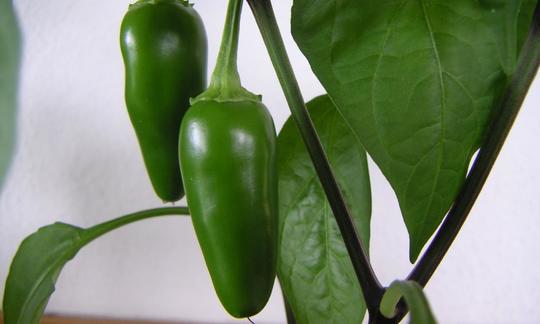


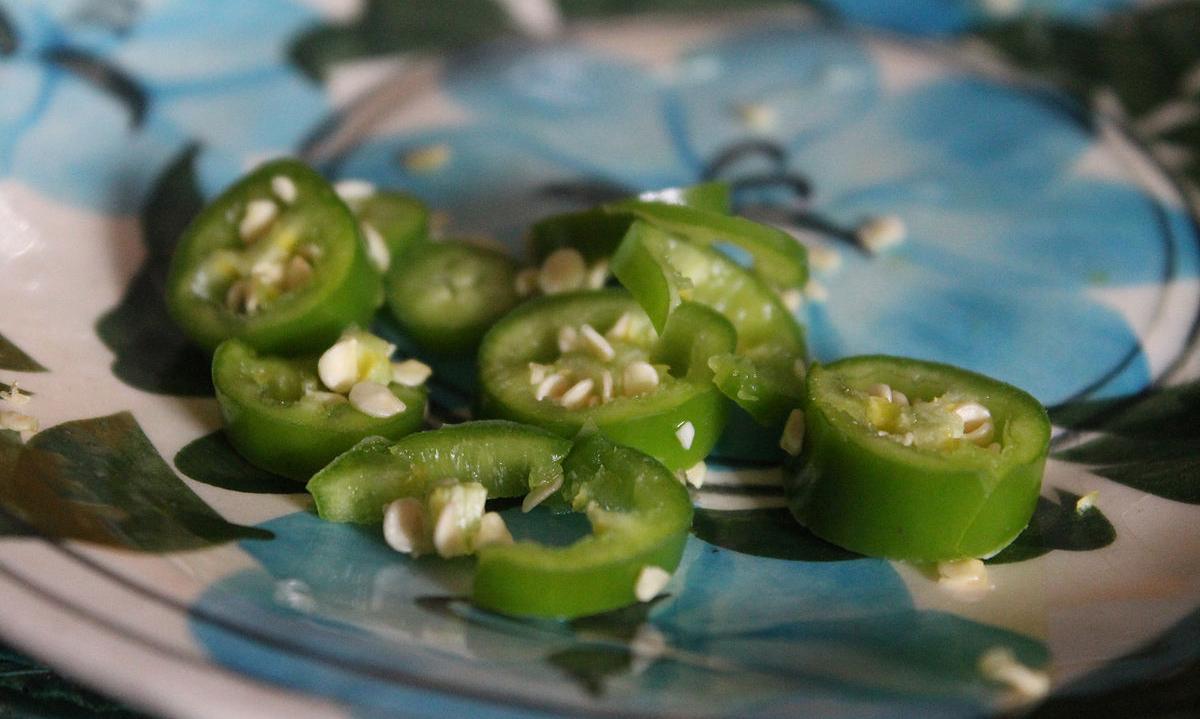
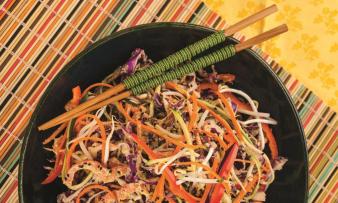
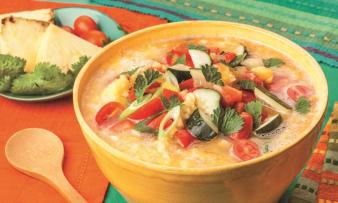
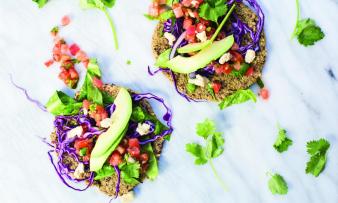





Comments